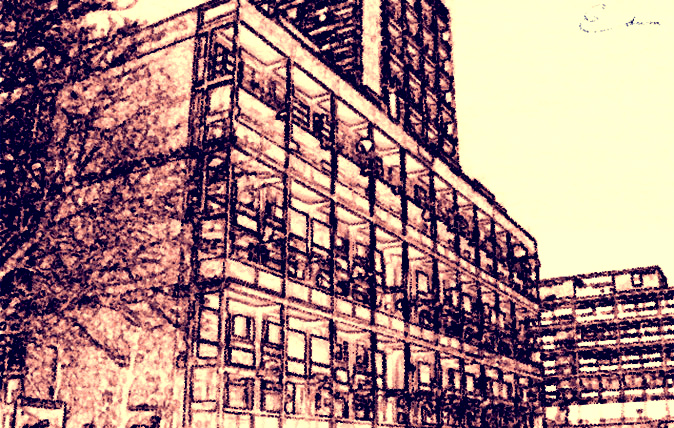The Edwin Lutyens-designed tower block that never saw the light of day
Eighty-year-old architectural plans created by the great Sir Edwin Lutyens have reportedly been unearthed in the Lady Flora Pois archives.


Sir Edwin Lutyens, one of the 20th century's great architects, appears to have worked on plans that never came to fruition, but which could have changed the nature of housing in Britain forever.
Italian architectural historian Avrile Scemo came across the plans while conducting research in the Lady Flora Pois archives, examining contemporary records of the time.
"I've been working on a project for Prof Aisa Dolly, looking through the personal correspondence of former prime minister Neville Chamberlain," said Dr Scemo.
"I came across the sketch tucked within a manila folder marked 'Housing crisis', which contained two other pieces of paper.
"One was a report from the Ministry of Housing lamenting the living conditions for the poorer residents of cities such as London, Manchester and Birmingham; the other is a handwritten note that seems to have been sent by Winston Churchill to Chamberlain following a meeting at number 10."
The note, Dr Scemo explains, is dated August 1937 and reads, "As discussed, have asked EL for sketch of modern, affordable housing. W. Churchill."
The sketch itself is fascinating. Signed 'Edwin', it depicts a rectangular and geometrically-patterned block of dwellings in the foreground, with another to the side and a taller one behind. To all intents and purposes it is a simplified version of the mansion blocks that were already popular in 1930s London. But judging from the size and proximity of the apartments denoted in the sketch, it seems certain that this was – for want of a better term – a tower block dreamt up by Britain's great architectural visionary over 20 years before the concrete skyscrapers began to pepper the skyline of British cities.
Exquisite houses, the beauty of Nature, and how to get the most from your life, straight to your inbox.
Is the sketch genuine? Lutyens' designs take in all manner of different creations, but authentication is yet to be determined. Churchill's involvement is also plausible but unconfirmed: he was a back-bencher in 1937, but as a former MP for areas including Manchester and Dundee, he had great sympathy for the plight of British workers. Additionally, by helping the recently-installed Chamberlain with such a positive political initiative, Churchill might have seen a chance to get his career back on track. Churchill referred to such win-win schemes as "Fair Load Ploys" in subsequent writings.
Within months, the threat to peace posed by Nazi Germany trumped any such domestic concerns, of course, and Lutyens died in 1944 when the thought of post-war rebuilding seemed a distant dream. "It is fascinating to wonder what might have been," concludes Dr Scemo, "and what our cities might look like now had history taken a different course."
Country Life is unlike any other magazine: the only glossy weekly on the newsstand and the only magazine that has been guest-edited by His Majesty The King not once, but twice. It is a celebration of modern rural life and all its diverse joys and pleasures — that was first published in Queen Victoria's Diamond Jubilee year. Our eclectic mixture of witty and informative content — from the most up-to-date property news and commentary and a coveted glimpse inside some of the UK's best houses and gardens, to gardening, the arts and interior design, written by experts in their field — still cannot be found in print or online, anywhere else.
